The Week in Estate Jewelry: Over-the-Top Opulence
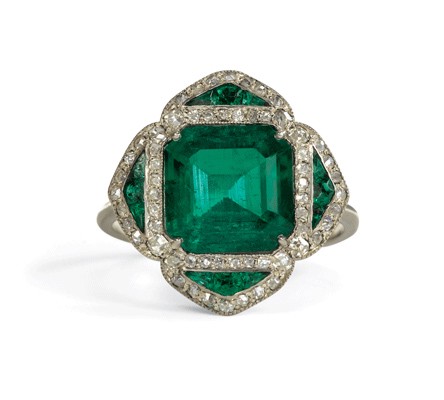
OK, normally when I’m putting this column together, I look for a cross-section of stuff, with at least a couple things that aren’t insanely, prohibitively expensive. But you know what? Sometimes I just want to look at insanely, prohibitively expensive things! This installment of The Week in Estate is all about the ridiculously opulent.
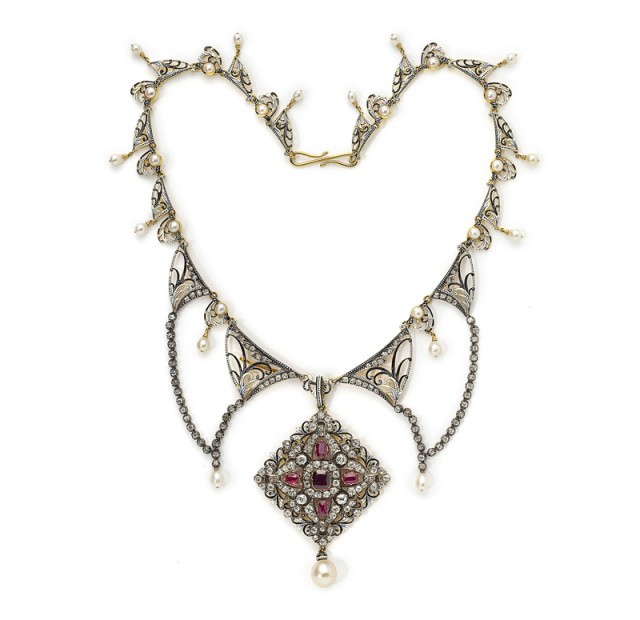
A little while back, I told you guys about Carlo Giuliano (remember those ruby and pearl earrings?). What I didn’t tell you was that he had sons! Carlo Joseph and Arthur were trained by their father, and they continued the family business after his death in 1895. The sons were talented jewelry designers as well, and I’ve spoken with Giuliano experts who consider their work to be just as exquisite as their dad’s. This necklace is an excellent example. Circa 1890, it’s in the Renaissance Revival “Holbeinesque” style that Carlo Giuliano (the elder) made famous.
One of the main characteristics of the Holbeinesque (referring to Renaissance artist Hans Holbein) look is a border of stylized floral motifs colored in enamel in the manner of the English 16th century, surrounding a large center stone (or group of stones) — as seen in this necklace’s central pendant. Using gold as a base, Carlo Joseph and Arthur then arranged tiny sections of black and white enamel alongside diamonds and pearls, forming an openwork necklace that supports the lozenge-shaped pendant of diamonds and rubies with a pearl drop.
Unfortunately, the Giuliano firm ended sadly. We don’t know when Carlo Joseph died, but Arthur committed suicide in August 1914. His motives aren’t known, but he had recently left his wife of 20 years for another woman, and it also can’t have been easy to maintain a luxury business after the outbreak of World War I. The business closed after his death, and any remaining stock was sold at auction.
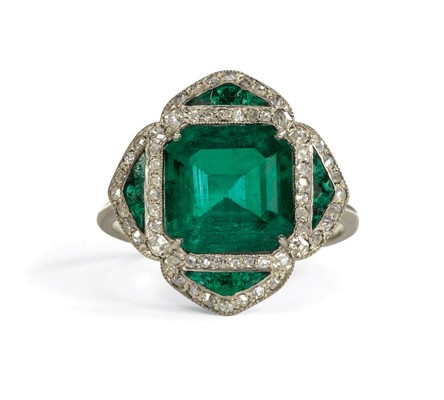
WOW. A French 3.2 ct Colombian emerald, diamond, and platinum ring, circa 1910. Just, wow.
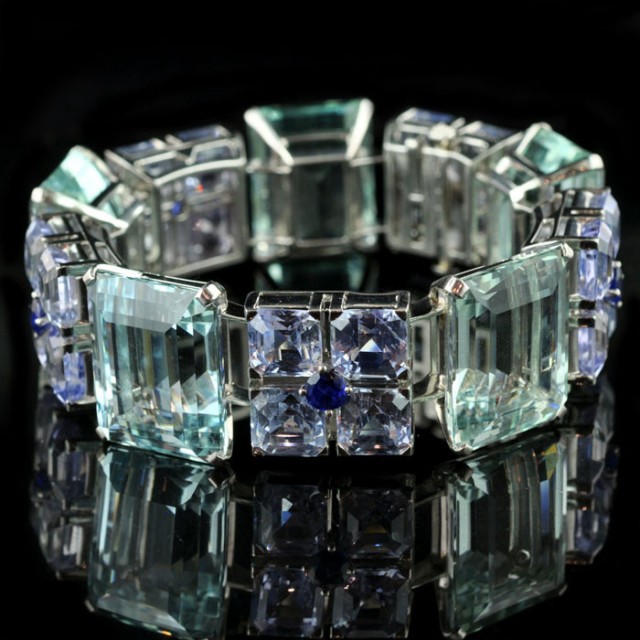
Circa 1935, this Oscar Heyman bracelet is ridiculous. It’s got five huge step-cut aquamarines (approximately 130 carats, total) flanked by 20 square- and five round-cut sapphires. All set in platinum. It’s something Carole Lombard would wear around the house in My Man Godfrey.
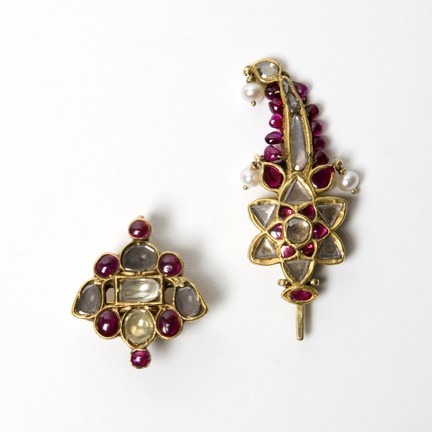
A small (5.5cm) 17th century kalgi with matching pin, from Mysore, South India. Both are set with diamonds and burmese rubies.
A kalgi is a traditional Indian turban jewel, originally worn by Maharajas as an indication of their wealth and status. Nowadays they’re often worn as bridal jewelry, with the groom accenting the jewel with plumes of feathers.
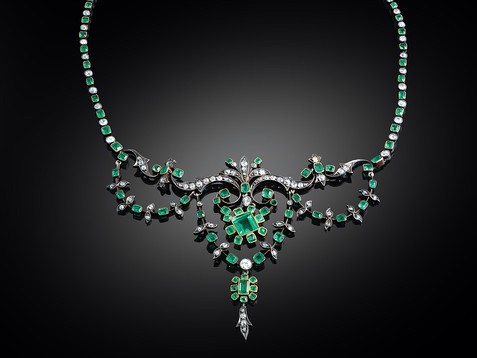
This Victorian necklace features 9.00 carats of emeralds and 3.00 carats of diamonds set in silver with a gold mounting. I’m highlighting it because, yes, it’s gorgeous, but it’s also unusual — there are tons of similar Victorian necklaces out there in garnet, but I’ve never seen one in emerald before.
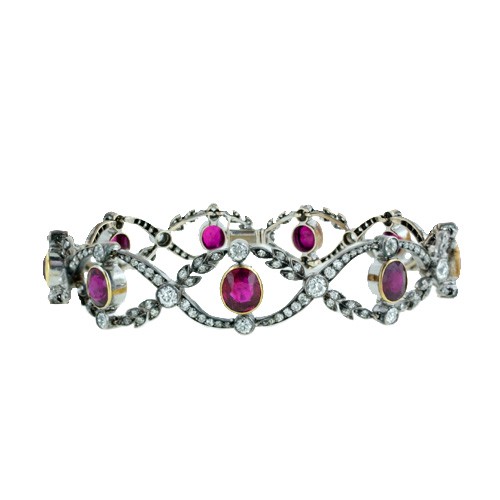
A late 19th century silver over gold Edwardian bracelet set with nine oval cut rubies with accents of single cut and old mine cut diamonds in a twisting garland design.
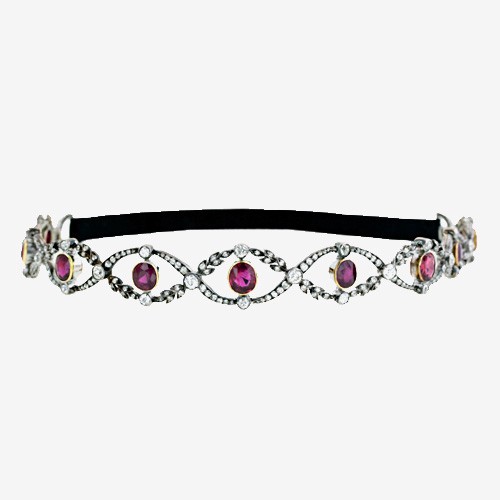
Even better, it has a ribbon collar extension, so it can be worn as a choker.
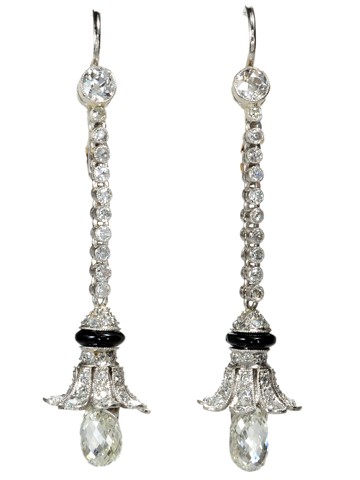
Circa mid to later 20th century, these platinum and diamond briolette chandelier earrings feature old European cut diamonds with platinum bezels, onyx bands, and inverted tulip-shaped diamond canopies from which hang incredible diamond briolettes.
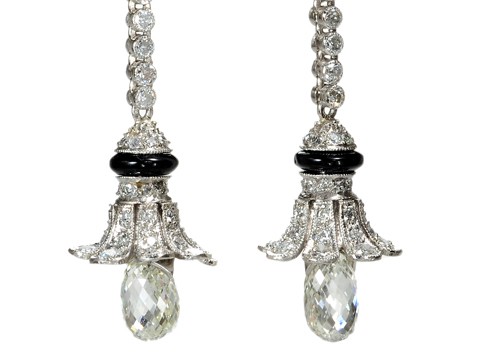
Each earring has a total diamond weight of 1.75 carats.You might want to take a break now to wipe the drool off your keyboard.
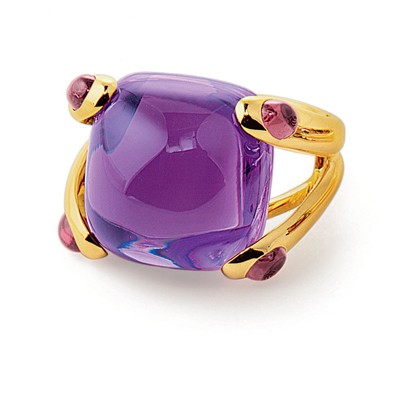
This 18k yellow gold and amethyst “Candy” ring isn’t antique or even estate, but I’m breaking the rules because I love it. And even if it is a contemporary ring, it’s also by a renowned jewelry house (Verdura), so that means I get to tell you about Duke Fulco di Verdura.
Verdura, born in 1898 in Palermo, was the fun-loving child of wealthy aristocrats. As a young man, his society connections brought him into contact with Coco Chanel, and he soon left Italy to work for her in Paris. It was there that he discovered a talent for jewelry design, and he created some truly iconic pieces — including the two Maltese cross cuff bracelets that Chanel wore constantly. His style was enthusiastic — big and bold, with bright precious and semiprecious gems and interesting color combinations.
Verdura took off for Hollywood in the ’30s, and soon his pieces were being snapped up by the likes of Greta Garbo, Marlene Dietrich, and Katherine Hepburn. Next up was a shop in Manhattan, where he also conquered the New York society crowd. In the meantime, he even found time to collaborate with Salvador Dali on a jewelry collection.
Verdura continued designing jewelry for decades, finally selling his business in 1973. (He died in 1978.) The company is now owned and run by Ward Landrigan, the former head of Sotheby’s US jewelry division, and his son Nico. Using original sketches by Verdura, they continue to produce big, gorgeous jewelry — just like this amethyst ring. If anybody wants to buy it for me, I’m a size 5 1/2.
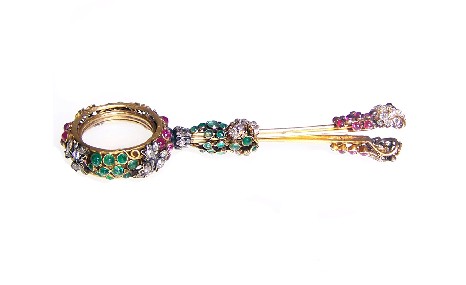
Circa 1860, this French piece is gold encrusted with cabochon rubies, emeralds and diamonds. It’s a dress holder — the end is manufactured to grip one’s dress so that it can be lifted and kept unsullied when one is forced to walk the grimy streets of the lower classes.
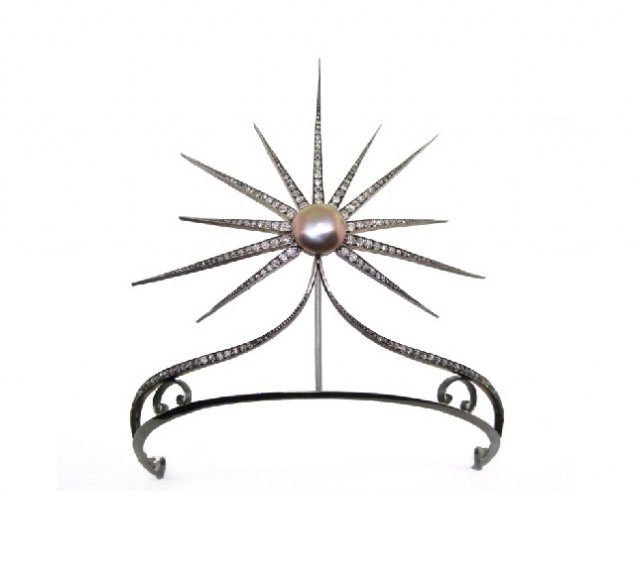
Um. I don’t even know what to say about this. Circa 1890, a starburst diamond tiara with a natural buttonshaped pearl at center. Holy CRAP.
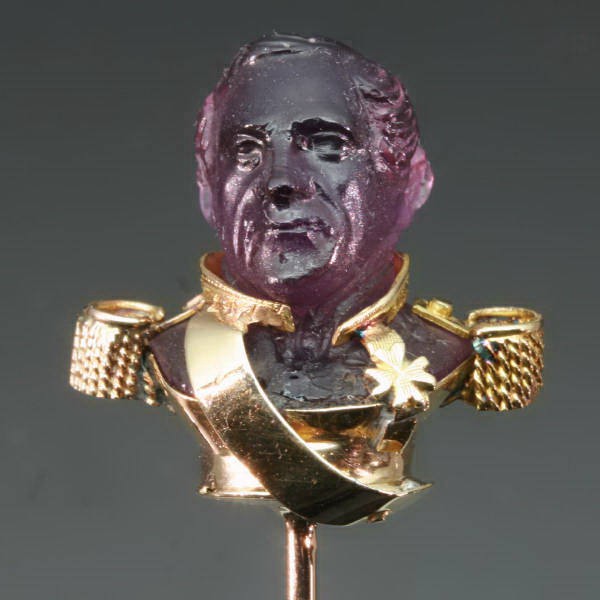
Now this is just for fun … Are there any historians out there? The dealer needs your help in figuring out the identity of this little purple man! It’s an 18k gold stickpin, circa 1820, and the little guy is fashioned out of amethyst-colored paste (which I told you about last time). The dealer thinks he might be a French general from around the time of Napoleon Bonaparte, but things still don’t tally. “The cross our general is wearing here has four arms while the normal French order has five. Also the sash and epaulets could be of important indication. Or does the haircut style indicate a British officer instead of a French one?” Click on the link and get in touch if you have any ideas!
Previously: Snakes, Tiaras, and Conch Shell Pearls.
Monica McLaughlin is extremely bummed that she can’t make the Hairpin meetup on Thursday, but she will be there in spirit, wearing that tiara.